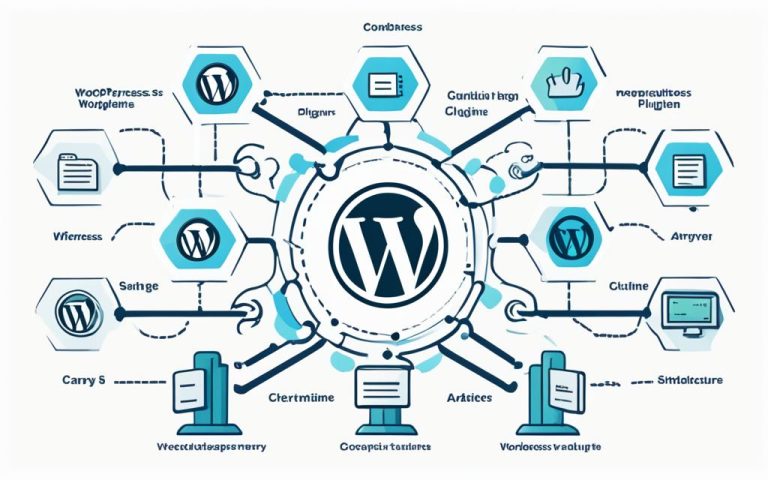Technical SEO Guide: Complete & Easy to Understand
Are you struggling to improve your website’s organic rankings? Look no further! In this complete and easy-to-understand guide, we will delve into the world of technical SEO and help you optimize your website for better visibility and search engine rankings.
Technical SEO plays a crucial role in ensuring that your website meets the technical requirements of modern search engines. It focuses on elements such as crawling, indexing, rendering, and website architecture to enhance your website’s performance in search results.
Why is technical SEO important, you ask? Well, it directly affects your website’s ability to be found, crawled, and indexed by search engines. Without proper technical SEO, your website may not rank well, resulting in limited visibility and reduced organic traffic.
Improving technical SEO involves various considerations, such as optimizing your site structure, URL structure, XML sitemaps, JavaScript, and addressing issues like duplicate content. By implementing the right technical SEO strategies, you can significantly enhance your website’s visibility and organic rankings.
Stay tuned for our next sections, where we will explore technical SEO fundamentals, site structure and navigation, as well as crawling, rendering, and indexing techniques that will help you elevate your website’s SEO performance to the next level.
Technical SEO Fundamentals
Technical SEO is a fundamental aspect of optimizing your website for search engines. In 2024, it remains incredibly important in ensuring that your website is discoverable and ranks well in search results. Without proper technical SEO, your website may struggle to be found and crawled by search engine bots.
There are several key elements of technical SEO that you need to consider to improve your website’s performance. Let’s explore them:
- Crawlability: Search engine bots need to be able to crawl and access your website’s pages. This includes ensuring that there are no crawl errors, broken links, or blocked resources that prevent bots from properly indexing your site. Tools like the Google Search Console can help you identify and fix any crawl issues.
- Performance: Website performance is a crucial factor in technical SEO. Slow loading speeds can negatively impact user experience and search engine rankings. Optimizing your site’s performance by compressing images, minifying CSS and JavaScript, and implementing caching mechanisms can improve both user satisfaction and search visibility.
- Indexation: Ensuring that your webpages are properly indexed by search engines is essential for visibility in search results. You can optimize indexation by creating a clear site architecture, implementing XML sitemaps, using structured data markup, and addressing issues such as thin content, duplicate content, hreflang, canonical tags, 404 pages, and 301 redirects.
By paying attention to these technical SEO fundamentals, you can help search engines understand and crawl your website effectively, ultimately leading to improved organic rankings and increased visibility for your business.
Remember, technical SEO is the foundation upon which the rest of your SEO efforts are built. Without a solid technical foundation, other optimizations may not yield significant results. Take the time to understand and implement these fundamental aspects of technical SEO to ensure your website can reach its full potential in search rankings.
Example of a Technical SEO Checklist
| Technical SEO Checklist | Status |
|---|---|
| Ensure proper robots.txt file | ✓ |
| Check for crawl errors | ✓ |
| Optimize website loading speed | ✓ |
| Create XML sitemaps | ✓ |
| Implement structured data markup | ✓ |
| Fix duplicate content issues | ✓ |
| Optimize URL structure | ✓ |
| Implement canonical tags | ✓ |
By following a comprehensive technical SEO checklist like the one above, you can ensure that your website meets the necessary requirements for search engine optimization and sets the stage for success in your digital marketing efforts.
Site Structure and Navigation
Site structure plays a crucial role in technical SEO. A well-designed and organized structure ensures that search engines can easily crawl and index your website, leading to better visibility in search results. Let’s explore the key elements of site structure and navigation that can positively impact your SEO efforts.
Flat Structure
A flat site structure involves organizing your web pages in a way that they are only a few links away from each other. This means that important pages can be reached directly without too many clicks. Search engines prefer this flat structure as it enables efficient crawling and indexing of your content. Moreover, a flat structure enhances user experience by facilitating easy navigation and quick access to relevant information.
Organized Structure
An organized site structure ensures that your content is logically categorized and grouped. By organizing your pages into relevant categories and subcategories, you make it easier for both search engines and users to understand the content hierarchy. This helps search engines in their crawling and indexing processes, and it also improves user experience by enabling intuitive navigation.
URL Structure
Consistent and descriptive URL structure is important for both SEO and user experience. When your URLs are organized and follow a logical hierarchy, they provide valuable information to search engines about the content and context of each page. It is recommended to use keywords in your URLs and separate them with hyphens for readability. This improves your website’s chances of ranking higher in search results.
Breadcrumbs Navigation
Breadcrumbs navigation is an SEO-friendly feature that adds internal links and helps users navigate your website. Breadcrumbs provide a clear trail, showing users their current location within the site’s hierarchy. This not only improves user experience but also assists search engines in understanding the relationship between different pages on your website. Implementing breadcrumbs navigation enhances site architecture and facilitates better indexing of your content.
Summary
Optimizing your site structure and navigation is essential for technical SEO success. By maintaining a flat and organized structure, ensuring a consistent URL structure, and implementing breadcrumbs navigation, you can enhance your website’s crawlability, indexability, and user experience. These elements work together to improve your search engine rankings and make it easier for users to find and navigate your valuable content.
Crawling, Rendering, and Indexing
Crawling, rendering, and indexing are crucial steps in technical SEO. These processes ensure that search engine spiders can access and understand your website’s content, ultimately impacting its visibility in search results.
One important aspect of crawling is identifying and fixing crawl errors. These errors can hinder search engines from properly accessing your pages, resulting in missed opportunities for organic rankings. Utilizing tools such as Google Search Console, Screaming Frog, and Semrush Site Audit can help pinpoint and resolve these issues.
Another factor that affects indexing is internal linking, especially for deep pages on your website. By strategically interlinking relevant pages, you can guide search engine bots to discover and index important content that might otherwise be buried. This not only improves indexing but also enhances the overall user experience.
XML sitemaps remain a vital component in assisting search engines in finding and indexing your URLs. By providing a comprehensive map of your website’s structure and hierarchy, XML sitemaps facilitate the crawling and indexing process, ensuring that all relevant pages are included in search engine databases.
It is also recommended to regularly check log files and use tools like Google’s “Inspect” feature to ensure proper indexing. These practices help identify any potential crawl issues, allowing you to take proactive steps to optimize your website’s visibility in search results.
FAQ
What is technical SEO?
Technical SEO is the process of ensuring that a website meets the technical requirements of modern search engines with the goal of improved organic rankings.
Why is technical SEO important?
Technical SEO is important because it affects a website’s ability to be found, crawled, and indexed by search engines. Without proper technical SEO, your site may not rank well in search results.
What are the key elements of technical SEO?
Key elements of technical SEO include crawlability, performance, and indexation. Factors such as site structure, URL structure, XML sitemaps, JavaScript, duplicate content, and more should be considered to improve technical SEO.
How does site structure impact technical SEO?
Site structure is an important aspect of technical SEO. A flat, organized structure with pages that are only a few links away from each other makes it easier for search engines to crawl and index your site. Breadcrumbs navigation is also SEO-friendly as it adds internal links and improves site architecture.
What is the importance of crawling, rendering, and indexing in technical SEO?
Crawling, rendering, and indexing are crucial steps in technical SEO. It’s important to identify and fix any crawl errors that may prevent search engine spiders from accessing your pages. Tools like the Google Search Console, Screaming Frog, and Semrush Site Audit can help with this. Internal linking can also help with indexing, especially for deep pages. XML sitemaps are still important for search engines to find and index your URLs. Checking log files and using tools like Google’s “Inspect” feature can further ensure proper indexing.














